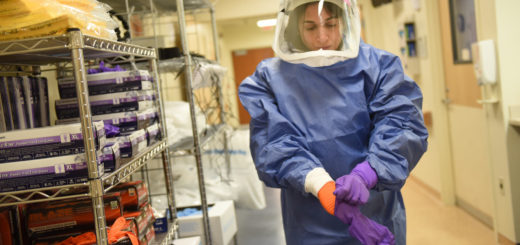Tiny Satellites, Big Ideas
Ruaridh Clark reports on new developments in miniature satellites and research using them at the University of Strathclyde.
Relatively ‘affordable’ space tourism (i.e. $200 thousand per trip as opposed to $20 million) is, if Virgin Galactic can be believed, just around the corner with paid passenger flights beginning in 2013. This is a significant milestone in itself, but it also marks a new era of greater access to space and opportunities to exploit its potential — an era in which space has become accessible for academics and small businesses with the previously insurmountable barriers to space exploitation reduced to manageable and affordable levels.
A major force in removing these obstacles to space has been the development of the CubeSat. CubeSats were first envisaged at California Polytechnic State University, where regulation and standardised requirements were devised and could be utilised in conjunction with low mass and volume satellites to provide cheap spacecraft.
CubeSats, as the name suggests, are small, cuboid-shaped satellites, typically coming in 1U or 3U configurations, with 1U being a 10×10×10cm cube and 3U having the same base but a length of about 30cm. These CubeSats contain electronic boards to carry out their mission and often have external solar panels to keep them powered. Many universities around the world have tried their hand at CubeSat development, aiming to maximise the potential of such a small platform, with the CubeSat also finding a home in Glasgow.
The Glasgow based company Clyde Space has placed a lot of faith in the continued success and development of CubeSat systems. This faith has been repaid, so far, with Clyde Space inhabiting about 30–40% of the global CubeSat power market and manufacturing the UK Space Agency’s first CubeSat. Their online shop provides an opportunity for prospective CubeSat developers to purchase almost everything they would require to build their satellite quickly and easily — with a Clyde Space launch provider service being all that’s missing for prospective satellite designers. However, opportunities to launch do exist for those who go looking for them, including the announcement that the International Space Station (ISS) is to be used as a launch pad for CubeSats.
Obviously for CubeSats to achieve the reductions in size and costs that they do when compared with regular satellites, large sacrifices to capabilities have to be made. A few of the main constricting aspects are the lack of volume to work with, power that can be provided on board and the absence of a propulsion system. Conventional propulsion is unavailable for CubeSats due to regulations preventing them from carrying explosive materials, which could potentially damage the rocket or main satellite cargo, and also allows for lower insurance costs. Strathclyde Students for the Exploration and Development of Space (StrathSEDS), in conjunction with the Advanced Space Concepts Laboratory at the University of Strathclyde, is also keen to play a role in the development of CubeSats. StrathSEDS has an opportunity to do this after being accepted onto the European, German and Swedish space agency funded REXUS/BEXUS (Rocket Experiments for University Students/Balloon Experiments for University Students) programme. Here the student team plans to build two CubeSats to demonstrate the use of inflatable structures, in near space conditions, for the few minutes they will spend in space before returning to earth.
One of the demonstrators, the Foldable Reflective System for Omni-altitude De-Orbiting (FRODO), will test the deployment and attitude upon re-entry of an inflatable and reflective cone-shaped structure, which is envisaged for de-orbiting CubeSats. The system is designed to utilise the solar radiation pressure acting on the reflective sail structure, which forces the satellite from an initially circular orbit into an increasingly eccentric one. Eventually, part of the orbit passes close enough to the Earth to be captured by atmospheric drag from where the CubeSat de-orbits completely. This method is promising as an end of life de-orbiting strategy with the sail operating passively, as the solar radiation pressure maintains the CubeSat’s orientation towards the sun.
The other technology demonstrator is the Self-inflating Adaptive Membrane (SAM) which consists of two layers of inflated spheres directly on top of and attached to each other. This will test the membrane’s shape alternating ability by pumping the air inside of the sphere on top into the one below, which results in folding of the membrane. A possible use for an inflatable structure like this could be the deployment of a curved reflector or maybe an array of solar panels. The future use of inflatable structures like these is an attractive proposition due to their lightweight and low volume. An especially low volume is achieved for these demonstrators by relying solely on residual air inflation for deployment. Residual air inflation occurs when the external pressure usually exerted by the atmosphere is absent; as a result the small quantities of air inside the inflatable elements expands, inflating the structure.
CubeSats seem assured of longevity in at least the university community; whether inflatable structures begin to play a significant role in future CubeSat missions is much less certain. Hopefully, the experiments planned by StrathSEDS will drive more progress and lead to a full CubeSat mission utilising inflatable structure technology.










